- HOME>
- Photo Techniques>
- Landscape : Flower Photo>
- 3. Making the bokeh stand out
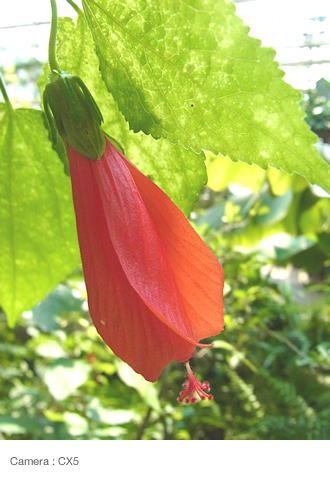
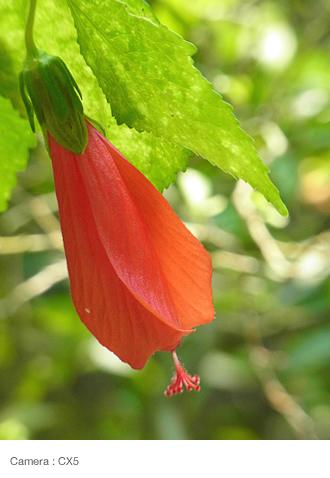
You cannot control the aperture on the CX5, so there are cases where the shot may not come out as intended if you want to create a significant blurring effect. That doesn't mean you have to give up, though. All you have to do is zoom toward the wide-angle end. Doing so will bring the flower right up close and at the same time blur the background. After achieving bokeh in this way, adjust how big the flower should appear by moving yourself either forward or backward.
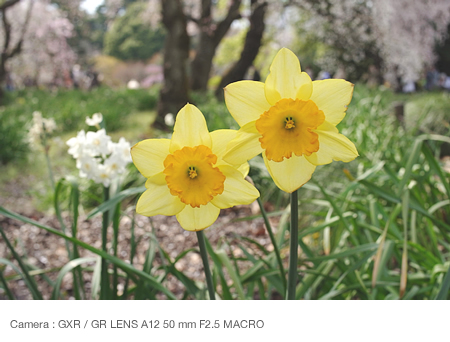
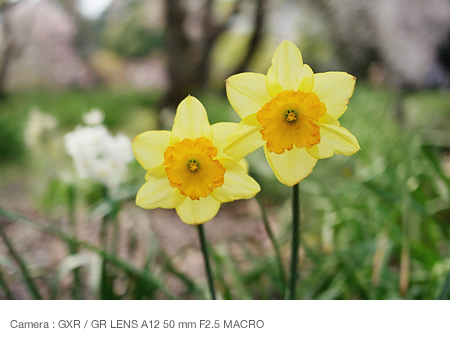
The GR DIGITAL and GXR come with an A (Aperture) mode; if you use this mode, you can easily obtain the kind of bokeh you want. As you make the aperture value (F) smaller than F8, at F5.6, F4, and F2.8, as the number gets smaller, the range of focus becomes accordingly shallow and it becomes easier to achieve bokeh. Once you understand this, you can freely control the amount of bokeh; so if you want it to be pronounced you can set it to F2.8 or if you want to show a bit of the background you can set it to F5.6 and so on.
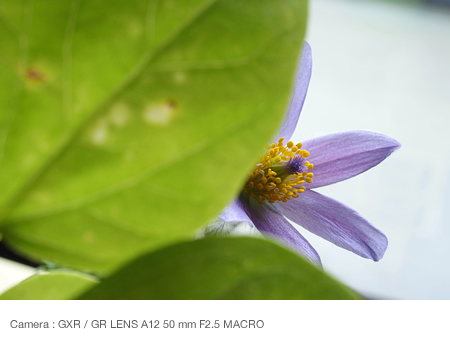
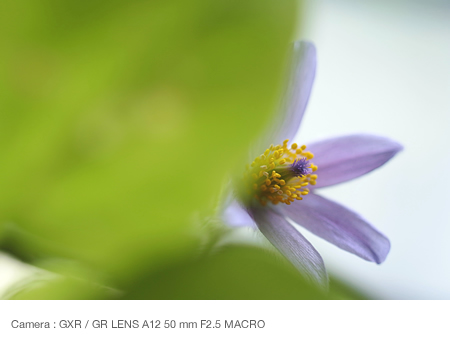
In the same way as with the background, by adjusting the depth of field with the aperture settings, the bokeh itself changes. For example, at if you shoot at F2.5, the leaves will blur softly.
If you stop down to F11, the presence of the leaves gets in the way.
What is depth of field?
Depth of field is the range of the distance that appears to be in focus. Making the aperture value larger (closing the aperture) expands this range; making the aperture value smaller (opening the aperture) constricts the range.
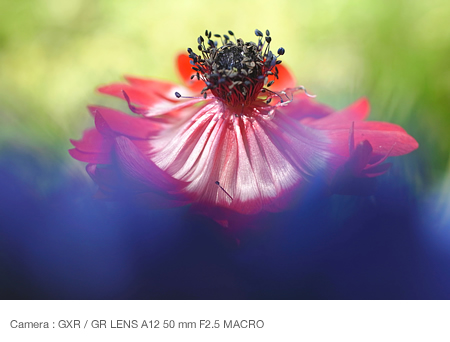
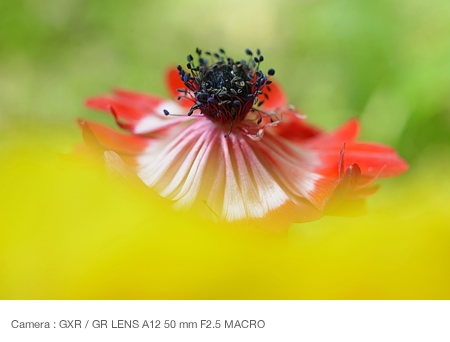

By making the aperture value smaller (opening the aperture), you can blur the background and clearly emphasize the subject. By making the aperture value larger (closing the aperture), you can shoot images that show clear depth from the foreground to the background. The aperture operation is performed when the shutter button is fully pressed.
For detailed information about how to make settings for each model, please see the model's instruction manual.
https://www.ricoh.com/r_dc/support/manual/
If you do not intentionally blur the area in front of the flower (front bokeh), the effort will often fail to achieve the desired effect. The trick to making it work lies in the compatibility of the subject and front bokeh colors and in how much to extend the bokeh effect within the frame.
First, the best colors for the front bokeh are neutral colors like yellow, pink, or the color of fresh grass. These colors will make the main subject stand out more. Conversely, darker colors dirty the frame and tend to make for failed shots.
If you then create as large a blur as possible and have it cover around half of the frame, that will give rise to a pleasing effect.
